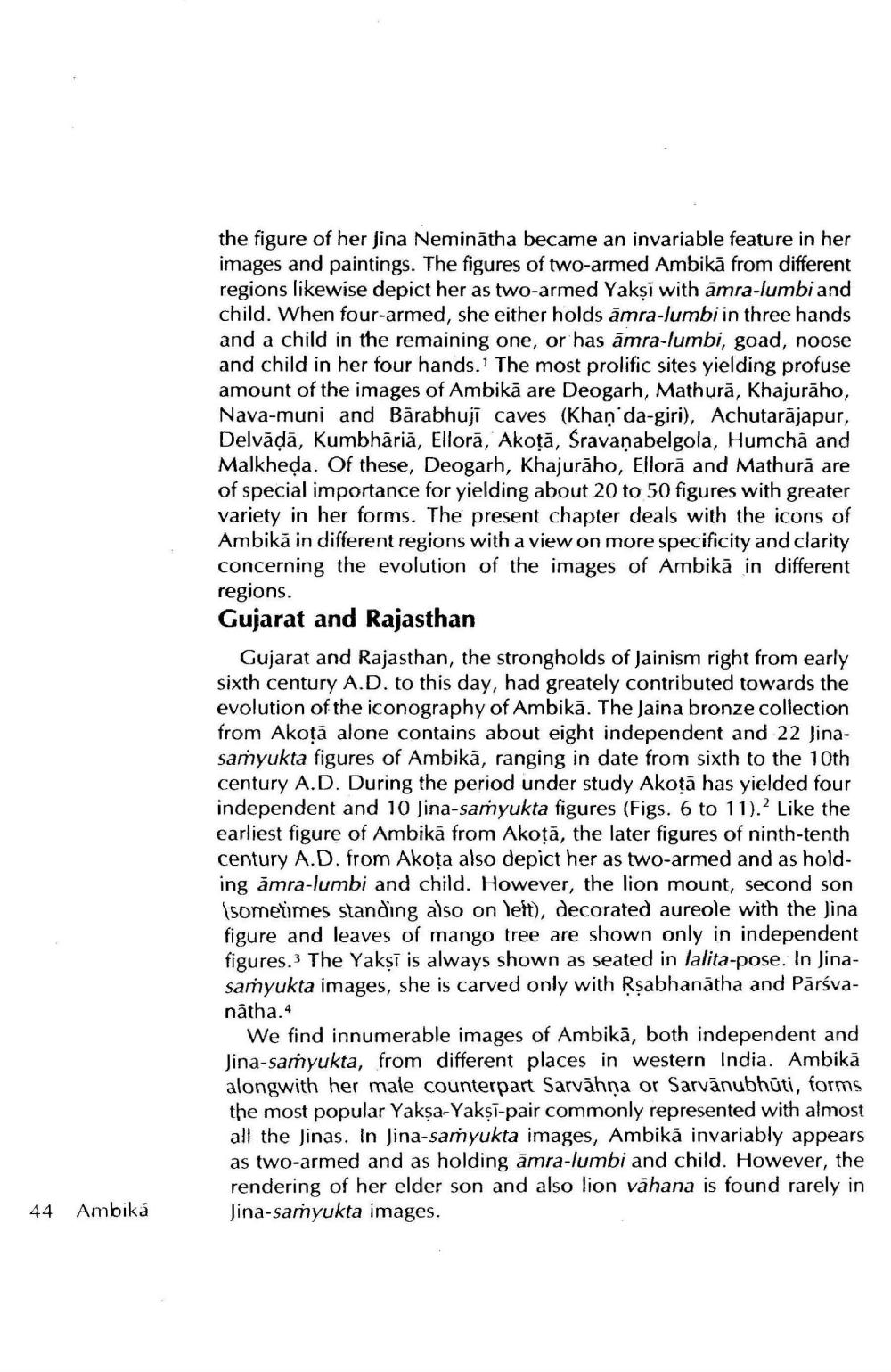________________
the figure of her fina Neminātha became an invariable feature in her images and paintings. The figures of two-armed Ambikā from different regions likewise depict her as two-armed Yakṣi with āmra-lumbi and child. When four-armed, she either holds amra-lumbi in three hands and a child in the remaining one, or has āmra-lumbi, goad, noose and child in her four hands. The most prolific sites yielding profuse amount of the images of Ambikā are Deogarh, Mathurā, Khajurāho Nava-muni and Bārabhuji caves (Khan da-giri), Achutarājapur, Delvāļā, Kumbhāriā, Ellorā, Akotā, Sravanabelgola, Humcha and Malkheda. Of these, Deogarh, Khajurāho, Ellora and Mathurā are of special importance for yielding about 20 to 50 figures with greater variety in her forms. The present chapter deals with the icons of Ambikā in different regions with a view on more specificity and clarity concerning the evolution of the images of Ambikā in different regions. Gujarat and Rajasthan
Gujarat and Rajasthan, the strongholds of Jainism right from early sixth century A.D. to this day, had greately contributed towards the evolution of the iconography of Ambikā. The Jaina bronze collection from Akoțā alone contains about eight independent and 22 Jinasamyukta figures of Ambikā, ranging in date from sixth to the 10th century A.D. During the period under study Akotā has yielded four independent and 10 Jina-samyukta figures (Figs. 6 to 11). Like the earliest figure of Ambikā from Akotā, the later figures of ninth-tenth century A.D. from Akota also depict her as two-armed and as holding àmra-lumbi and child. However, the lion mount, second son Isometimes standing also on left), decorated aureole with the Jina figure and leaves of mango tree are shown only in independent figures. The Yakşi is always shown as seated in lalita-pose. In Jinasamyukta images, she is carved only with Rşabhanātha and Pārsvanatha.4
We find innumerable images of Ambikā, both independent and Jina-samyukta, from different places in western India. Ambikā alongwith her male counterpart Sarvāhņa or Sarvānubhūti, forms the most popular Yakşa-yaksi-pair commonly represented with almost all the Jinas. In Jina-samyukta images, Ambikā invariably appears as two-armed and as holding āmra-lumbi and child. However, the rendering of her elder son and also lion vāhana is found rarely in Jina-samyukta images.
44 Ambika




